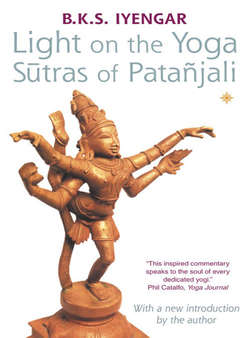Читать книгу Light on the Yoga Sutras of Patanjali - Литагент HarperCollins USD - Страница 53
Cit and citta (universal and individual consciousness)
ОглавлениеThe unalterable seer (cit) is the Lord of the consciousness. He is ever-present, changeless, constant, ever-luminous. The seer can be both subject and object at the same time. He is aware of all mutations taking place in his mind, intelligence and consciousness. He knows that they are his products and that they may taint him as long as avidya and asmita survive.
The seer is the seed, and consciousness the seedling. Mind is the stem, and vrittis, the fluctuations or thought-waves, are the leaves, relayed via mind through the single consciousness, the stem, back to the seed.
Consciousness and its branches, intelligence, mind and thought, become objects of the seer. The branches have no existence of their own without consciousness, and consciousness has none without the seer. It borrows light from the seer and extends towards intelligence, mind and thought. As it is not self-illumined it cannot be at once subject and object. It is a knowable object to the seer just as the objects of the world are knowable to it.
The cit (seer, soul, cosmic consciousness) is a passive, omniscient witness, whereas the citta (created or ‘sprouted’ consciousness) is active, impressionable and engaged, because it is involved in a direct relationship with the outside world. But when that involvement is analysed, controlled and brought to stillness, the citta gravitates towards its source, the cit, and takes on its characteristics, so that for the realized being cit and citta become one. The problem is that for the average person, the sprouted consciousness appears to be the seer, while in reality it merely masks the seer. Studying citta, we come to understand that it has no light of its own, but is dependent on its progenitor, the seer. Until this realization dawns, consciousness acts as a prism, distorting vision. Once it merges with the seer it becomes a perfect reflector, as well as a reflection, mirroring its own pure image, the soul reflecting on the soul.
So we see that citta can be pulled in two directions: outwards towards its mother, nature, prakrti, or inwards towards its father, spirit, purusa. The role of yoga is to show us that the ultimate goal of citta is to take the second path, away from the world to the bliss of the soul. Yoga both offers the goal and supplies the means to reach it. He who finds his soul is Yogesvara, Lord or God of yoga, or Yogiraja, a King among yogis.
Now, nothing is left to be known or acquired by him.
